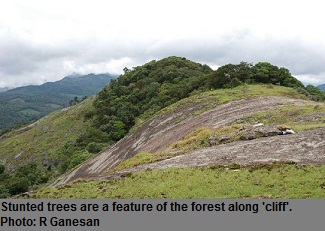Any and all opinions expressed in this newsletter are solely those of the author(s) and do not reflect the opinion of ATREE.
Centre for Excellence in Conservation Science
Royal Enclave,Srirampura,Jakkur Post
Bangalore-560064
Telephone: 080-23635555 (EPABX)
Fax : 080- 23530070
Tirupudaimarathur village is located on the banks of the confluence of Tamiraparani and Ramnadi rivers. This is a village where Painted storks, Pelicans and other birds find priority in the activities of the villagers. Vast area of common lands here has been declared a ‘conservation reserve’. This is the only village along Tamiraparani where commercial sand mining from the river bed is banned. "Many people are waiting for my death," says Justice Ratnavel Pandian, former Chief Justice of Madras High Court. Justice Pandian is the village's guiding light and instrumental in bringing about these changes. He is referring to those commercial lobbies and interest groups which operate in the countryside. "Haveyou seen our forest," he asks with pride.
I happend to trek to the 'Cliff' after many years. Cliff as we call it, is at 1550m and one can climb to it from Kakachi. This is a heritage trail, which we indulged in to unwind from routine fieldwork. The path winds its way up to a place from where one gets a panoramic view of the Kakachi region and the golf course of the tea estate. The way up from here is a short 350m climb, but goes through a large patch of Eethal, the reed bamboo which is one place to lose our way as herds of elephants and gaurs trample about this place. In the end, we did manage to surface at the cliff and were welcomed by good warm sunshine and some strong breeze at 50kmph.
On one side you can see the Muthukuzhi and Kodayar dam and on the other side a fine stretch of closed canopy wet evergreen forest. It's also a different world on top, the vegetation is stunted and trees are loaded with epiphytes. Many species like Aglaia, Diospyros and others fruit profusely here compared to the tallforests down below. We still have noexplanation why they do so but probably it'sthe most suitable elevation for them. We had established vegetation monitoring plots in1993 at this place which revealed that the Trekking up to the 'cliff'place was diverse and unique in terms of its plant species richness.
These mountain tops are therefore unique habitats which are also likely to be under threat due to climate change. Thus it becomes necessary that we keep monitoring such plots established earlier. But here, gaurs and elephants had other ideas; they had trampled and displaced the plot pegs which gave us some hard time to trace the corners of the plot.
These wetlands plants are beneficial not only to harbor biodiversity but also in improving human well being. Lloss in wetland plants will be detrimental not just to wetland biodiversity but also to humans specially the marginalized communities.
Editorial Team
Editor: Allwin Jesudasan
Associate editor: Rajkamal Goswami
Editorial Review: R. Ganesan, M. Soubadra Devy, T. Ganesh
Design and presentation: Kiran Salagame
A S H O K A T R U S T F O R R E S E A R C H I N E C O L O G Y A N D T H E E
N V I R O N M E N T
Tales from wilderness
Trekking up to the 'cliff'
- T Ganesh
If you have any suggestions or comments please let us know through the boxes below






